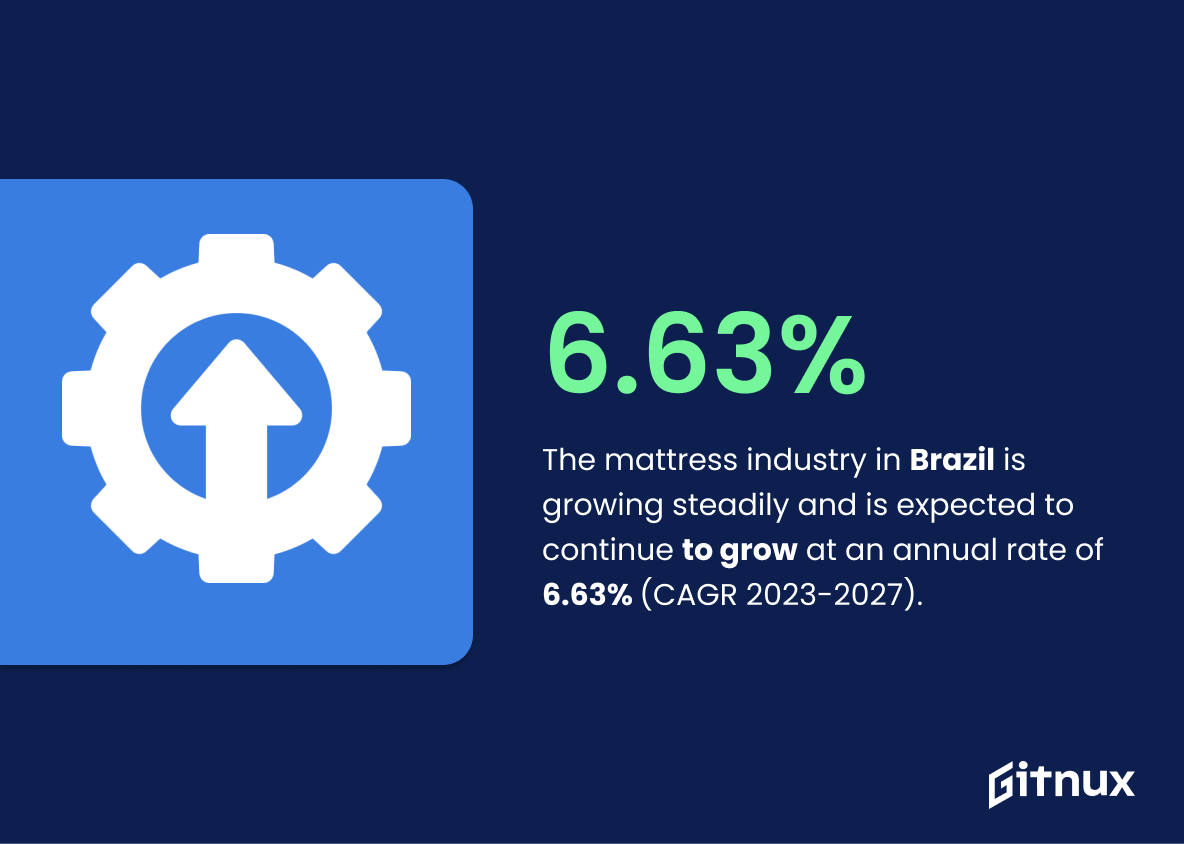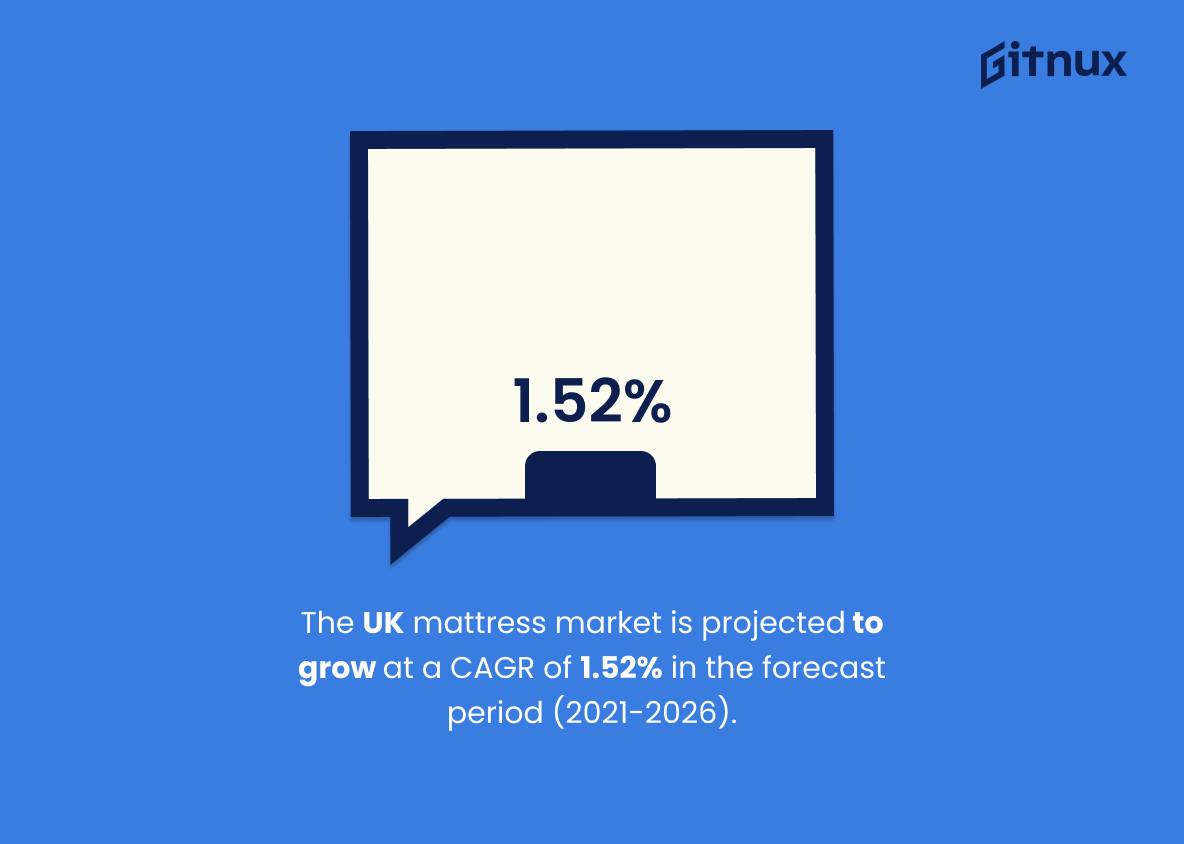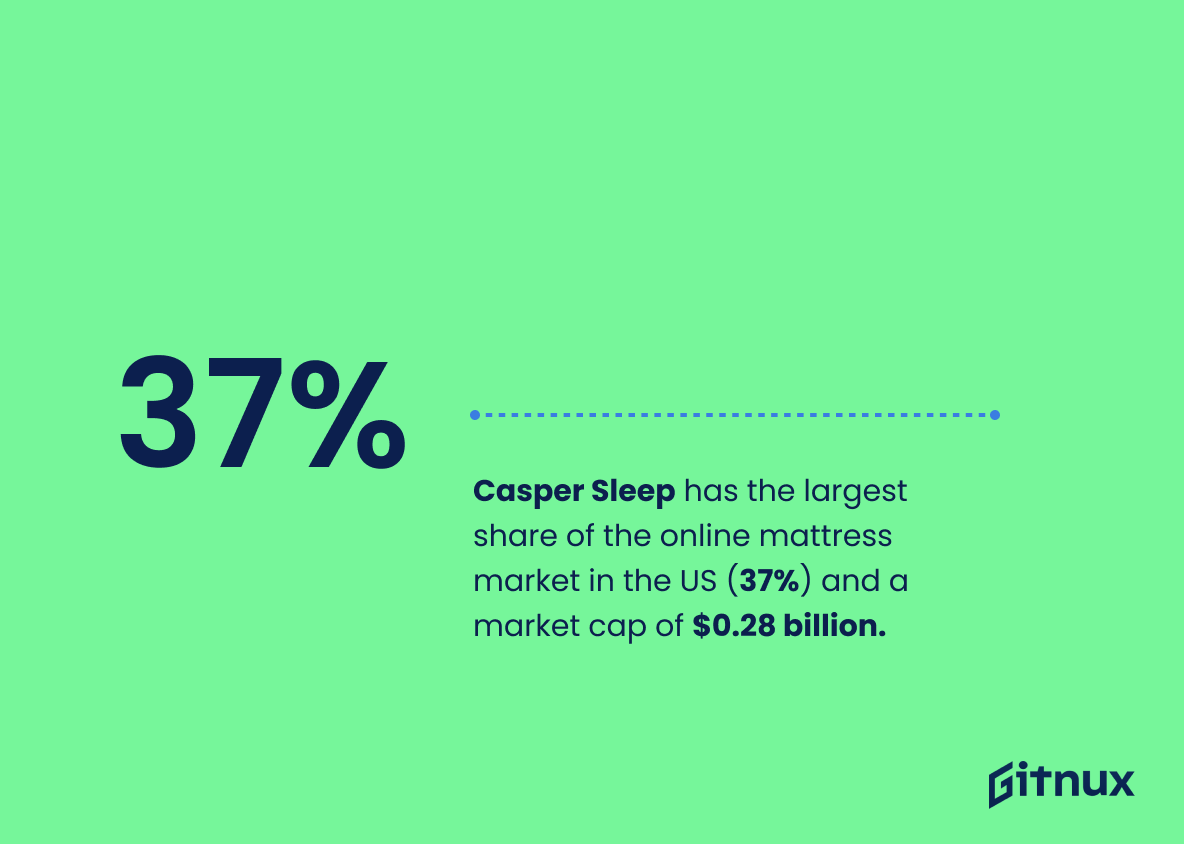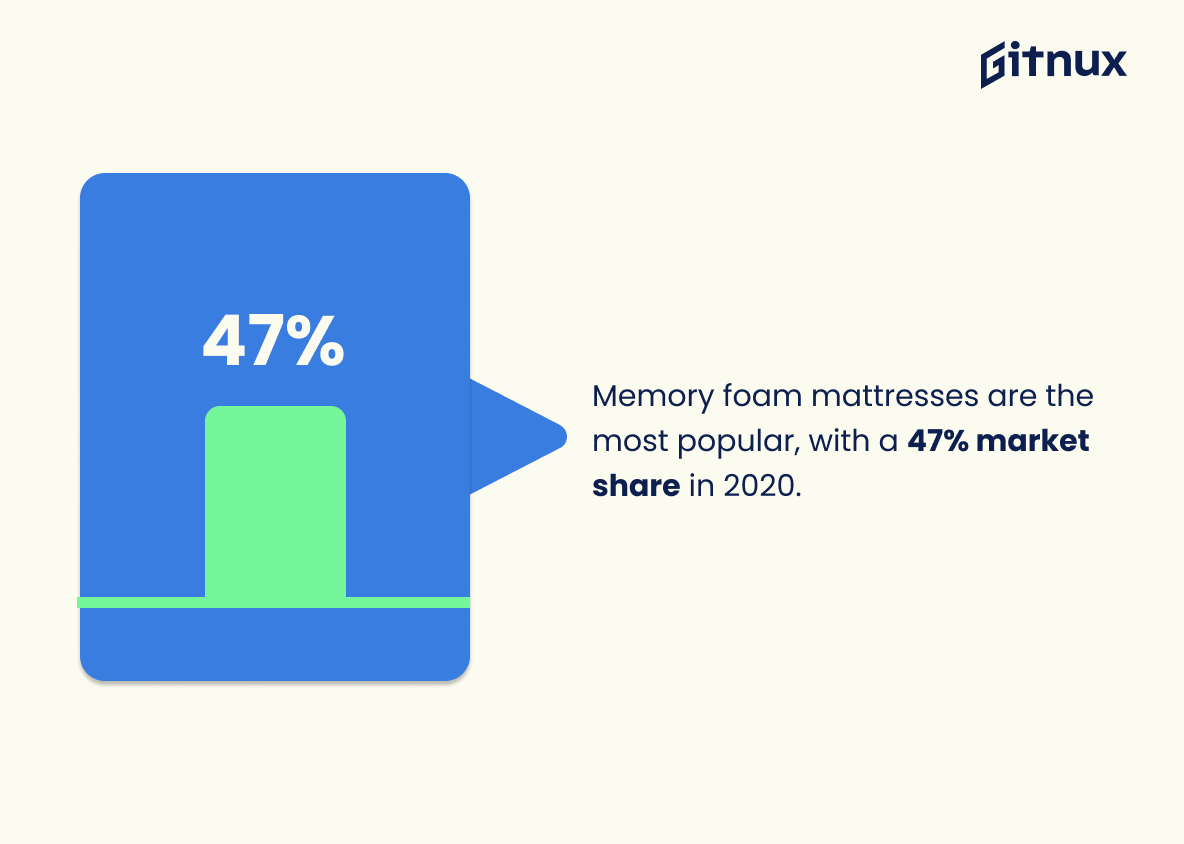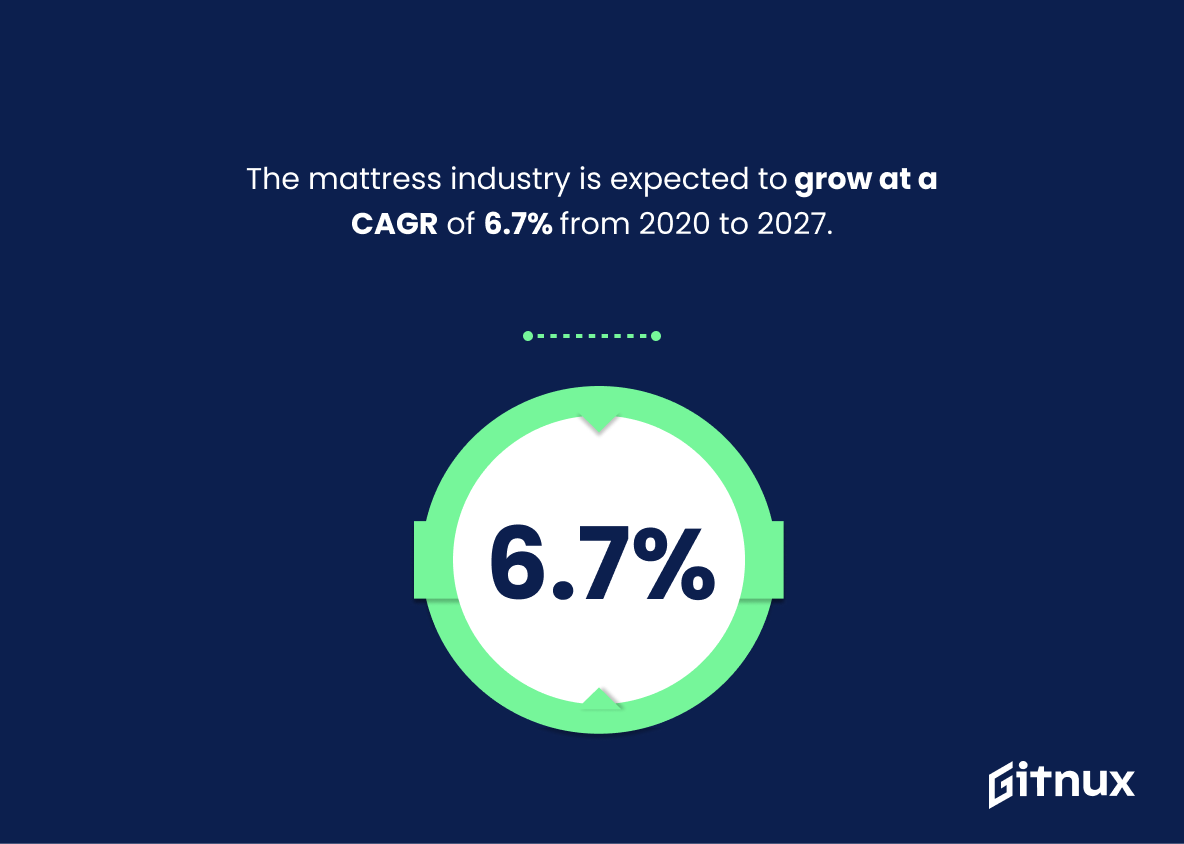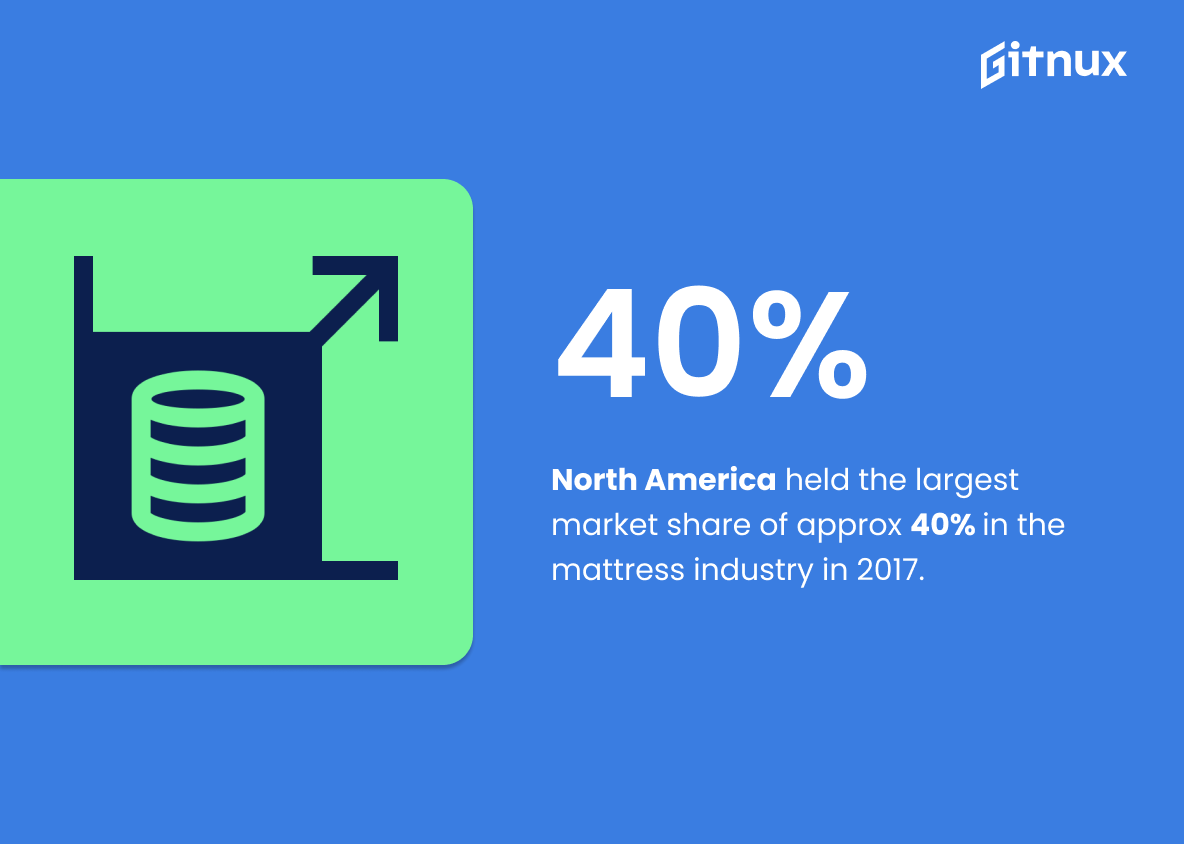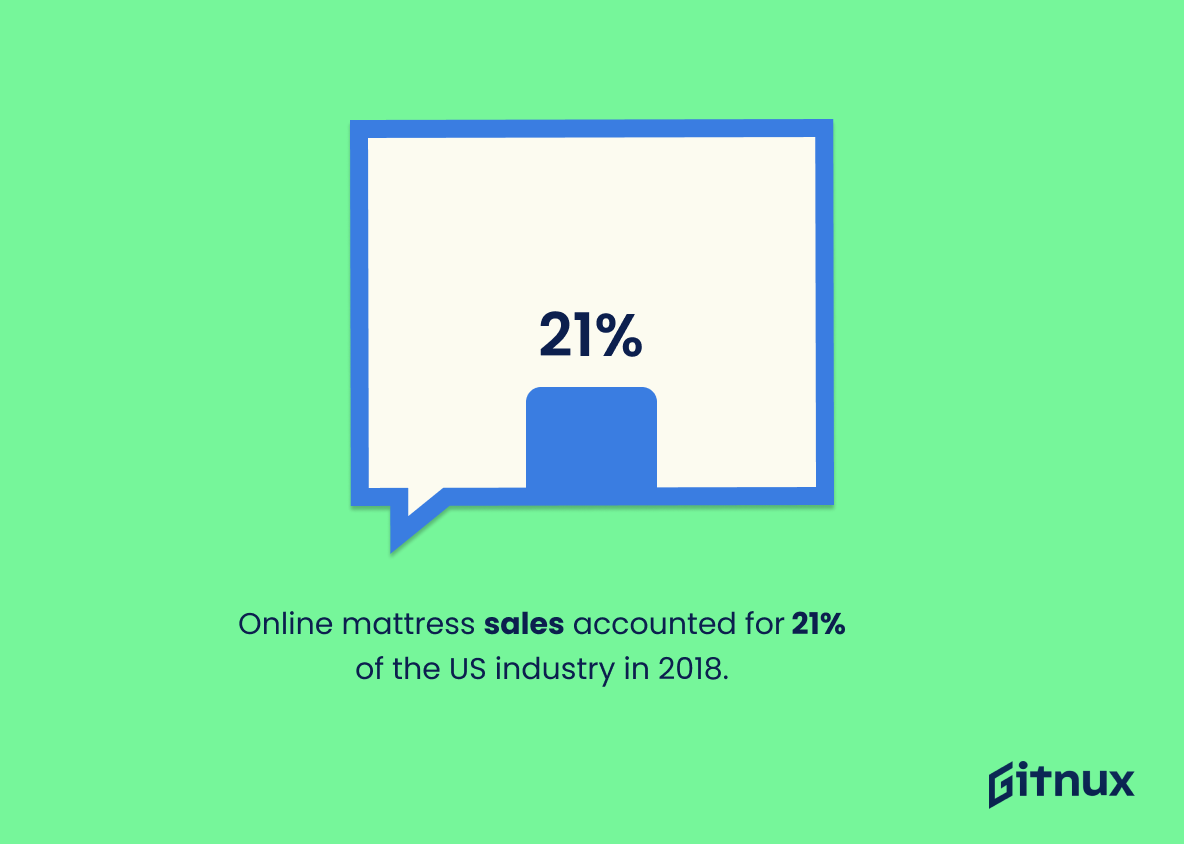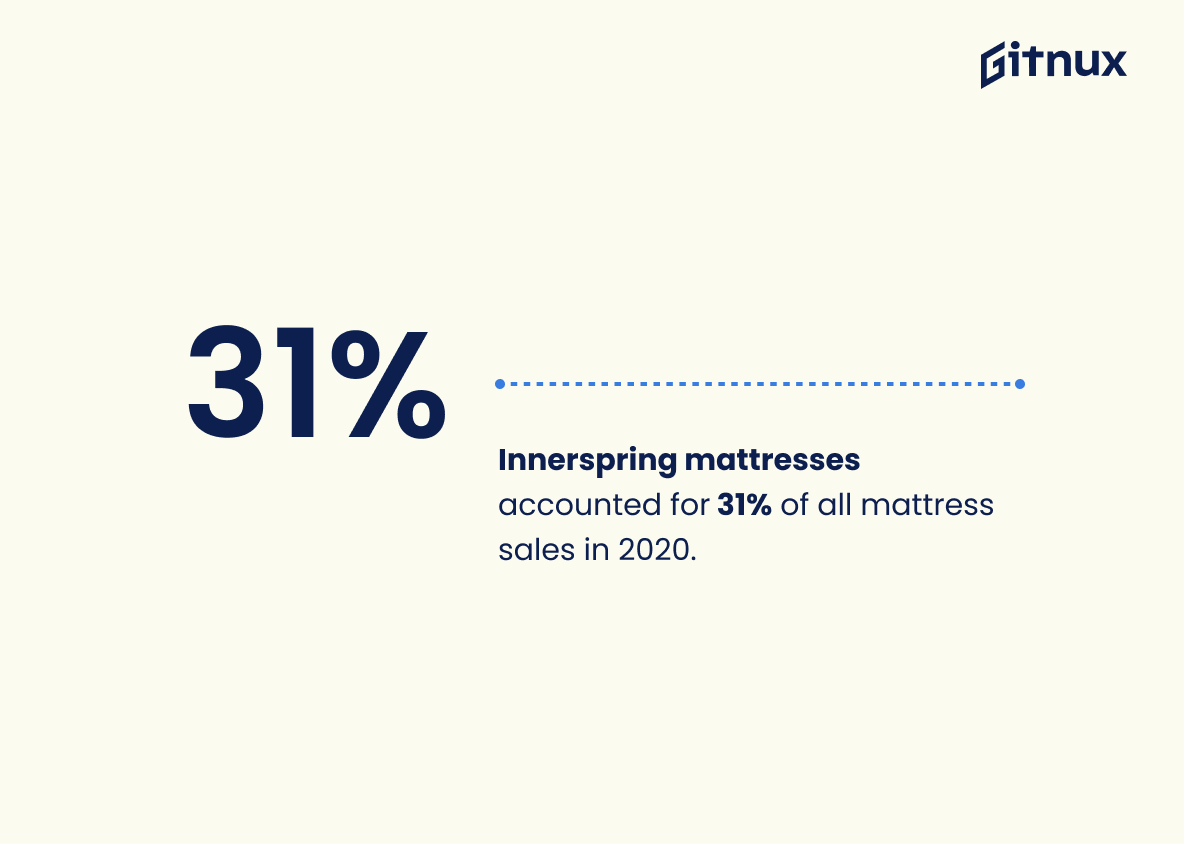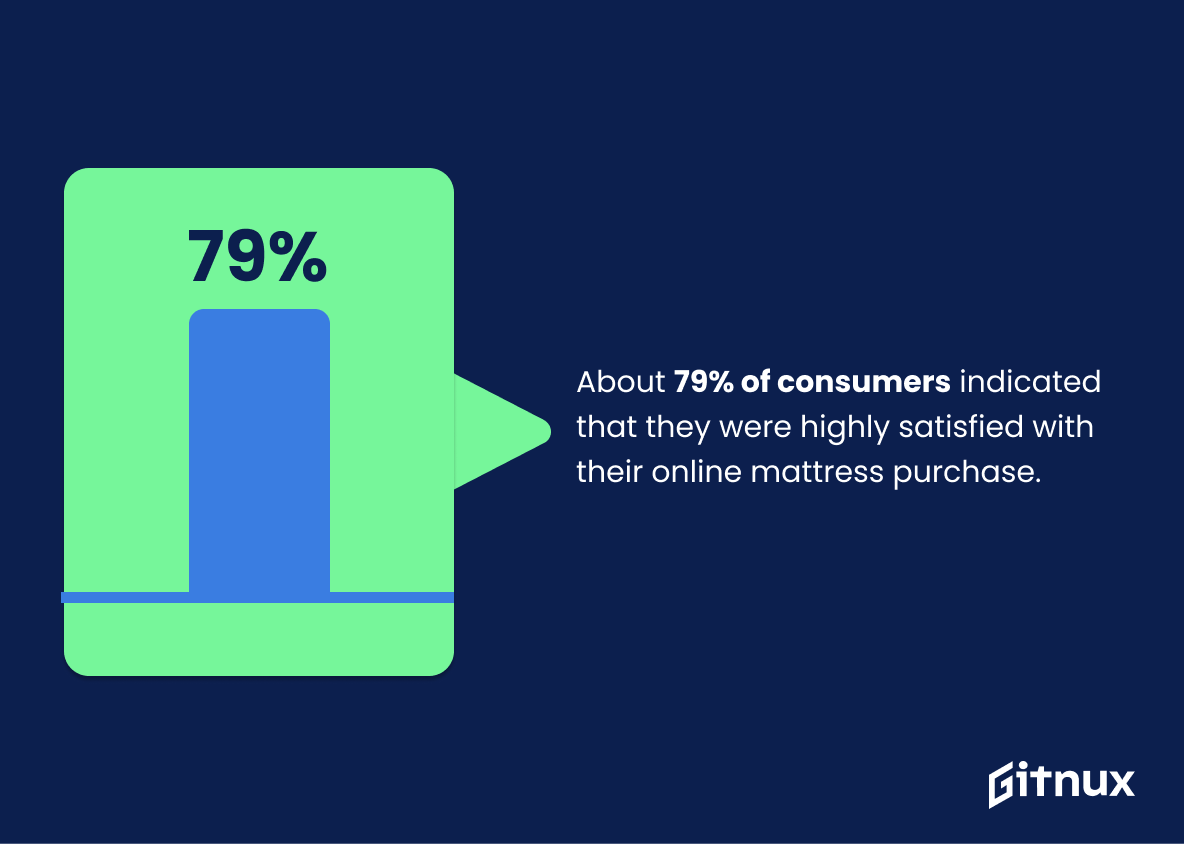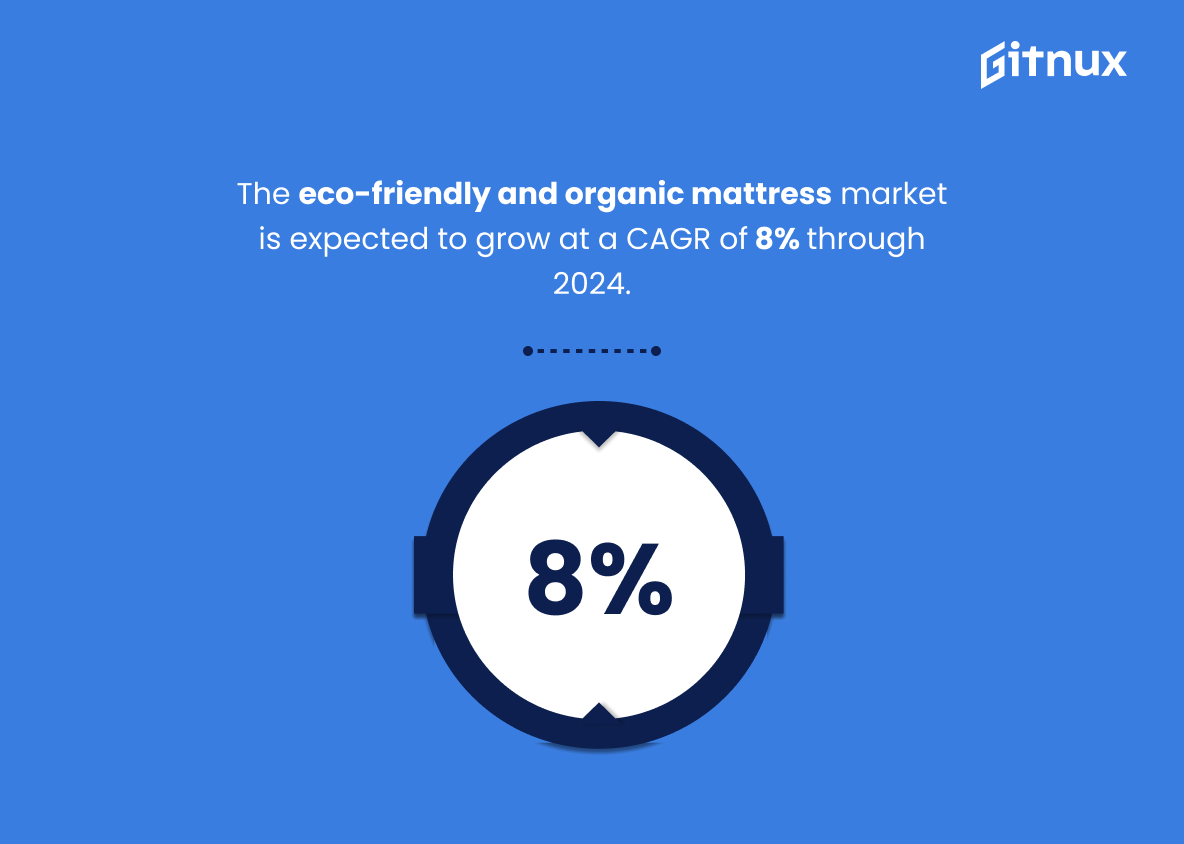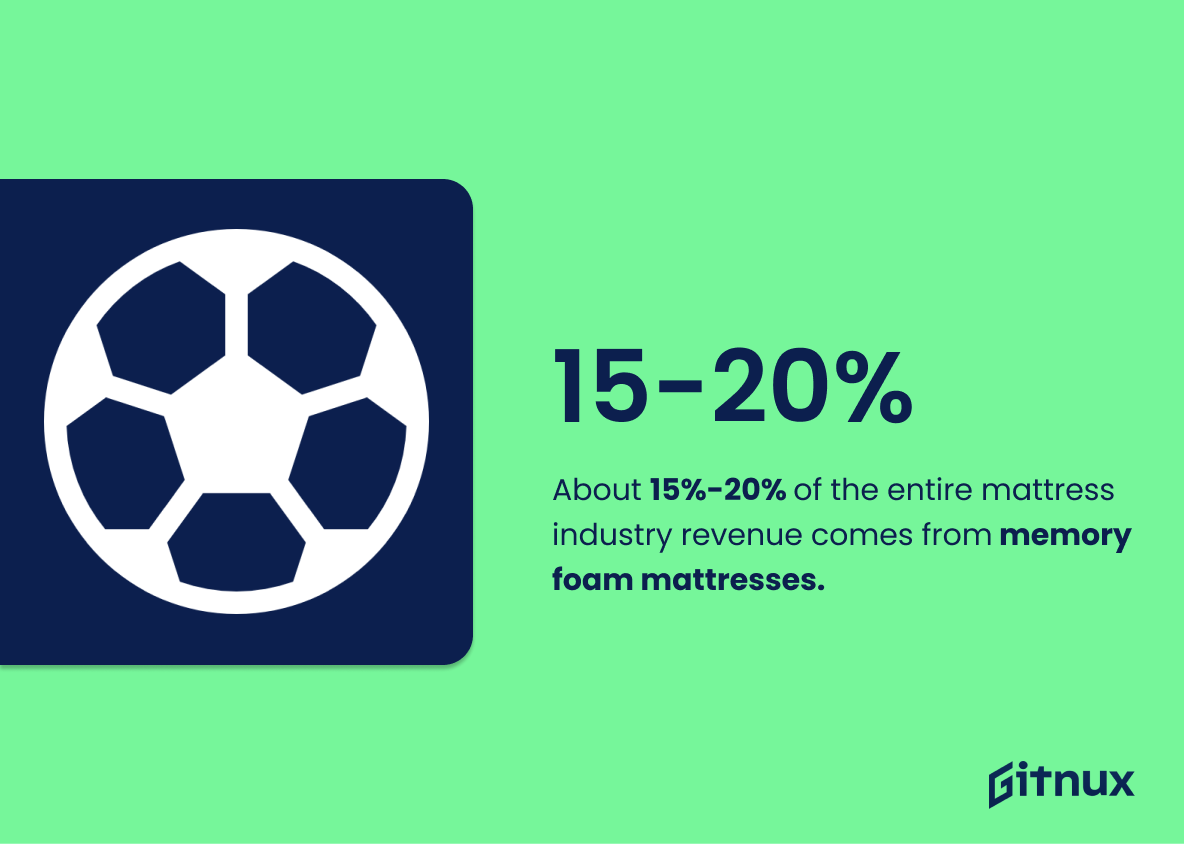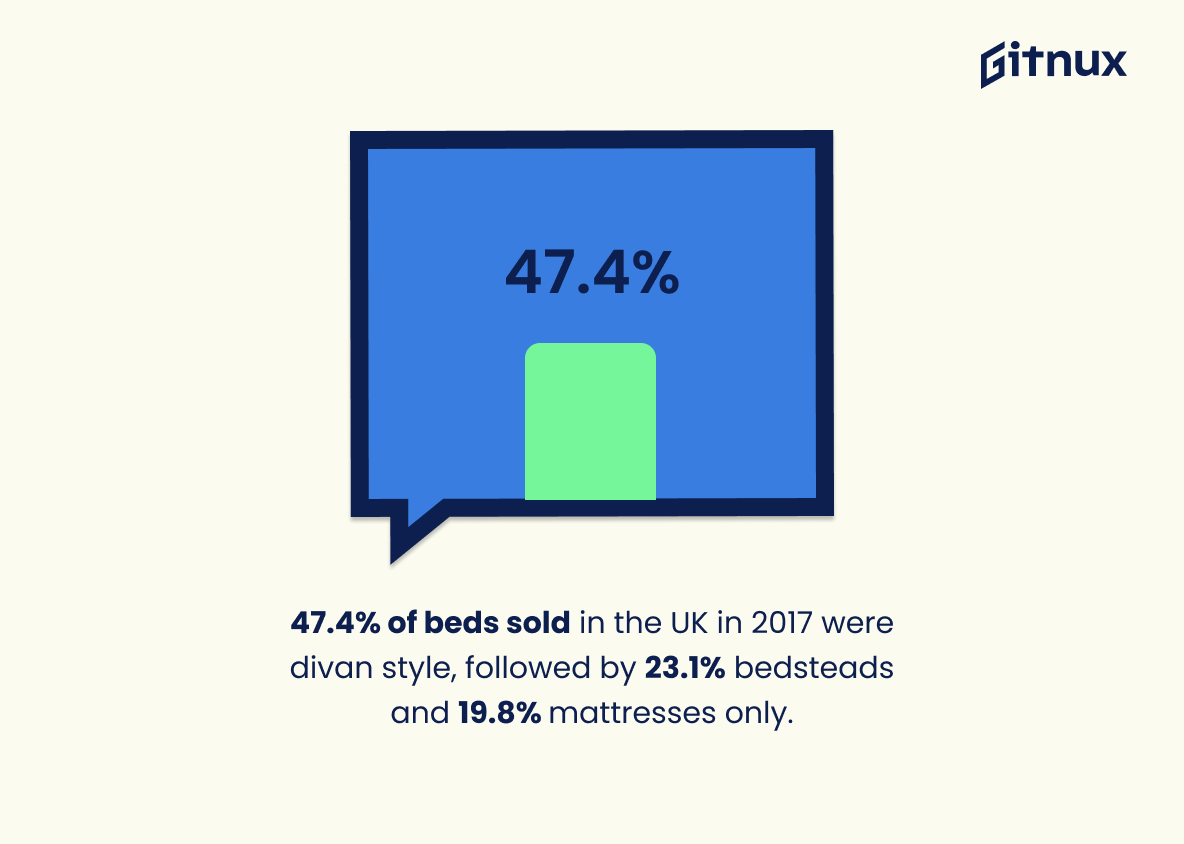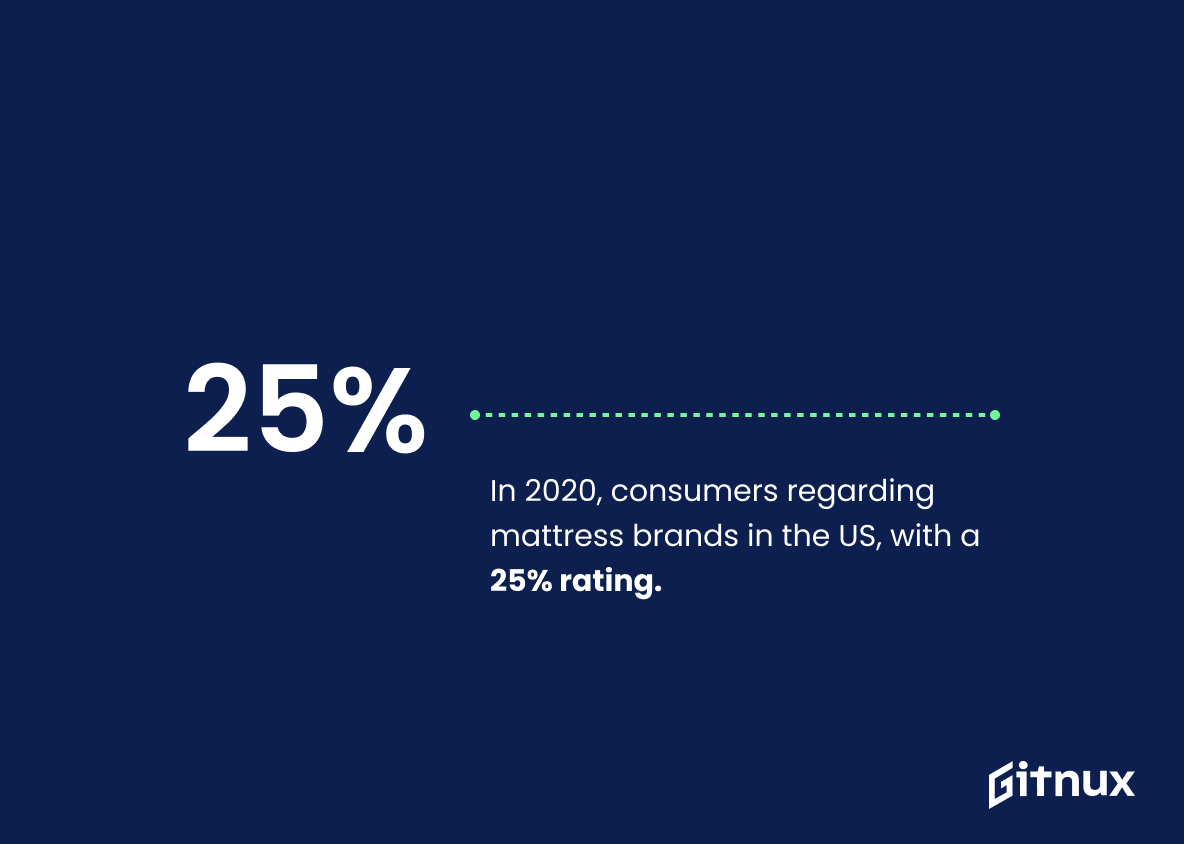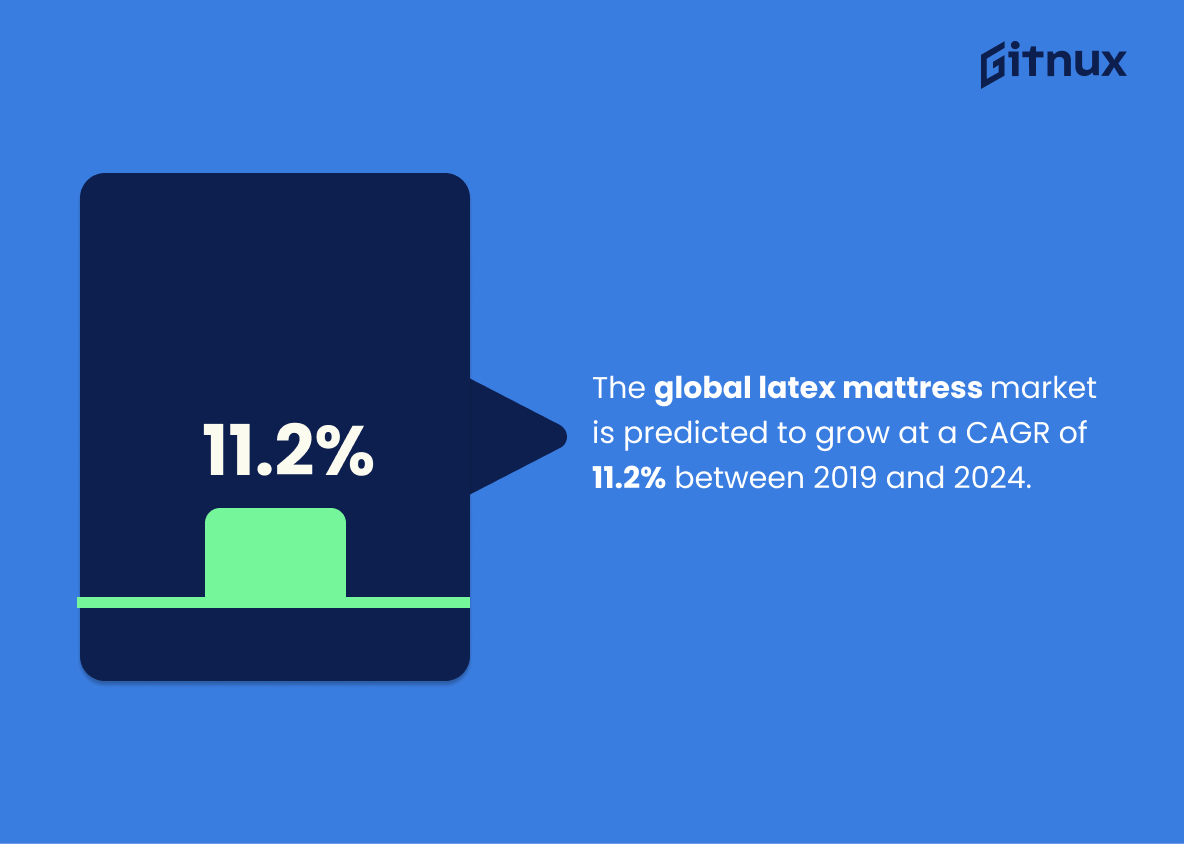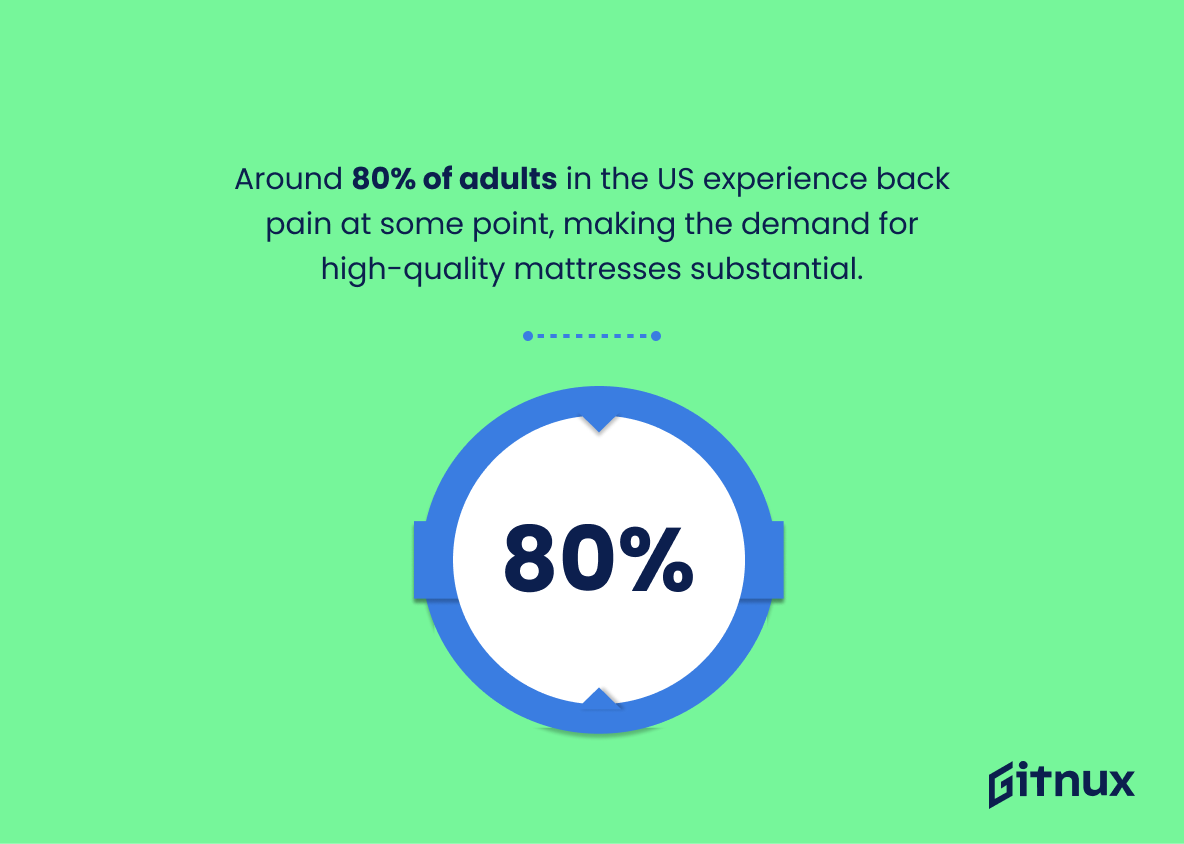Are you curious about the mattress industry? Do you want to know the latest trends, statistics, and facts? If so, you’ve come to the right place. In this blog post, we’ll take a look at the mattress industry and explore the latest statistics and trends.
We’ll discuss the size of the industry, the types of mattresses people are buying, and the most popular brands. We’ll also look at the impact of the pandemic on the industry and the future of the mattress industry. So, let’s dive in and explore the mattress industry.
Mattress Industry: The Most Important Statistics
The UK mattress market produced a revenue of 753 million British pounds in 2020 and is projected to grow at a CAGR of 1.52% in the forecast period (2021-2026).
Casper Sleep has the largest share of the online mattress market in the US (37%) and a market cap of $0.28 Billion, making it the world’s 5925th most valuable company.
Mattress Industry Statistics Overview
The Brazilian mattress retail market has seen a steady increase in sales volume from 2017-2021, reaching 35 million units and a retail sales value of 17.2 billion Brazilian reals and a production value of 11 billion Brazilian reals (2.15 billion U.S. dollars).
The mattress production value in Brazil increased by 54.5% from 2015 to 2021, amounting to more than 11.7 billion Brazilian reals.
The mattress industry in Brazil is growing steadily and is expected to continue to grow at an annual rate of 6.63% (CAGR 2023-2027).
In Norway, mattress manufacturing revenues increased from 98 million U.S. dollars in 2010 to over one billion Norwegian kroner in 2020. This shows the growth of the mattress industry in Norway over a 10-year period, which indicates that the mattress industry in Norway is a profitable and growing industry.
The UK mattress market produced a revenue of 753 million British pounds in 2020 and is projected to grow at a CAGR of 1.52% in the forecast period (2021-2026).
Casper Sleep had 634 employees worldwide in 2020, with 442 of them being full-time, and generated 497 million U.S. dollars in net revenue.
Covestro had 17,557 employees in 2021, making it one of the largest materials science companies in the world. The company produces high-tech polymers, which are used in the production of mattresses.
DeRucci is the leading mattress manufacturer in China with 8% market share, and the mattress market in China is expected to grow annually by 10.95% (CAGR 2023-2027).
Casper Sleep has the largest share of the online mattress market in the US (37%) and a market cap of $0.28 Billion, making it the world’s 5925th most valuable company.
The average annual expenditure on mattresses and springs per consumer unit in the United States was 115.63 U.S. dollars in 2021.
The global mattress market was valued at approx USD 30 billion in 2019.
It is a major player in the global economy. It also serves as a reminder of the importance of the mattress industry in providing comfort and support to people around the world. Furthermore, this statistic provides a valuable insight into the current state of the mattress industry, allowing readers to gain a better understanding of the industry’s current trends and potential for growth.
Memory foam mattresses are the most popular, with a 47% market share in 2020.
The majority of consumers are choosing memory foam mattresses over other types of mattresses, indicating that memory foam mattresses are the preferred choice for many. This statistic is important to consider when discussing the mattress industry, as it provides insight into the preferences of consumers and the overall market share of different mattress types.
The mattress industry is expected to grow at a CAGR of 6.7% from 2020 to 2027.
It is likely to experience a steady growth over the next seven years. This is an important piece of information for anyone interested in the mattress industry, as it provides insight into the industry’s future prospects and potential for success.
North America held the largest market share of approx 40% in the mattress industry in 2017.
The region is a major player in the industry, and that it is a lucrative market for mattress companies. It also serves as a reminder that the mattress industry is a global one, and that North America is a major contributor to its success.
Online mattress sales accounted for 21% of the US industry in 2018.
More and more people are turning to the internet to purchase their mattresses. It is a clear indication that the mattress industry is evolving and adapting to the changing needs of consumers, and that online mattress sales are becoming an increasingly important part of the industry. This statistic is an important piece of information for anyone looking to gain insight into the mattress industry and its current trends.
Innerspring mattresses accounted for 31% of all mattress sales in 2020.
Innerspring mattresses are the most popular type of mattress among consumers. This is an important insight for anyone interested in the mattress industry, as it provides a valuable glimpse into the preferences of mattress buyers.
The average selling price of a mattress in the US is $930.
This gives an indication of the overall health of the industry, as it can be used to compare the average selling price of mattresses over time. Furthermore, this statistic can be used to compare the average selling price of mattresses across different regions, allowing for a better understanding of the industry’s competitive landscape.
In 2018, there were nearly 10,000 mattress retail locations in the US.
This speaks to the prevalence of mattress retail locations across the country, and the potential for growth in the industry. It also serves as a benchmark for the industry, providing a point of comparison for future years. In short, this statistic is a valuable insight into the mattress retail industry in the US.
About 79% of consumers indicated that they were highly satisfied with their online mattress purchase.
The industry is meeting the needs of its customers and providing them with a positive experience when it comes to purchasing mattresses online. This is an important statistic to consider when discussing the mattress industry, as it demonstrates the industry’s commitment to customer satisfaction.
The eco-friendly and organic mattress market is expected to grow at a CAGR of 8% through 2024.
The eco-friendly and organic mattress market is expected to expand at a steady rate over the next few years, indicating that this sector of the industry is likely to remain a viable option for mattress shoppers. This is important information for anyone interested in the mattress industry, as it provides insight into the potential for growth and the potential for success in this sector.
About 15%-20% of the entire mattress industry revenue comes from memory foam mattresses.
Memory foam mattresses are a major source of revenue for the industry, and that they are a popular choice among consumers. This information is important for anyone looking to gain insight into the mattress industry, as it provides a clear picture of the industry’s financial landscape.
In 2017, the US mattress industry was worth $16.78 billion.
The mattress industry is a major player in the US economy, and that it is a lucrative and profitable industry. This statistic is an important indicator of the health of the mattress industry, and it is a useful tool for understanding the industry’s current state and potential for growth.
47.4% of beds sold in the UK in 2017 were divan style, followed by 23.1% bedsteads and 19.8% mattresses only.
Divan-style beds are the most popular choice among UK consumers, and that bedsteads and mattresses only are less popular. This information can be used to inform decisions about the types of beds to produce and market in the UK, as well as to understand the preferences of UK consumers.
There were 584 mattress manufacturers in the US in 2021.
There is a large and diverse range of mattress manufacturers in the US, providing consumers with a wide range of options when it comes to choosing the right mattress for their needs. This statistic is an important indicator of the health of the mattress industry and provides valuable insight into the current state of the industry.
In 2020, Serta held the highest brand preference among consumers regarding mattress brands in the US, with a 25% rating.
The brand has the highest level of consumer preference in the US. It is a clear indication that Serta is a leader in the mattress industry, and its products are highly sought after by consumers. This statistic is an important piece of information for anyone looking to gain insight into the mattress industry, as it provides a valuable insight into the current market trends.
The global latex mattress market is predicted to grow at a CAGR of 11.2% between 2019 and 2024.
The market is expected to experience significant growth over the next five years, indicating that now is the perfect time to invest in the industry. This statistic is a valuable piece of information for anyone looking to gain insight into the mattress industry and its future prospects.
Around 80% of adults in the US experience back pain at some point, making the demand for high-quality mattresses substantial.
The majority of adults in the US are suffering from back pain, which is likely due to inadequate mattress support. This highlights the importance of investing in a mattress that provides the necessary support and comfort to ensure a good night’s sleep.
Bed-in-a-box mattress companies occupied approx 12% of the global online mattress market in 2018.
These companies have been able to carve out a significant portion of the market, despite the presence of more established mattress companies. This statistic is important to consider when discussing the mattress industry, as it demonstrates the potential for disruption and innovation in the industry.
Conclusion
The mattress industry is an ever-evolving one, with new products and technology being developed all the time. As the industry continues to grow and expand, it is important to stay up to date on the latest mattress industry statistics.
By understanding the current trends and developments in the mattress industry, you can make more informed decisions when it comes to purchasing a mattress. With the right information, you can find the perfect mattress for your needs and budget.
References
1 – https://www.statista.com/statistics/1191707/brazil-mattress-production-volume/
2 – https://www.statista.com/statistics/1191715/brazil-mattress-production-value/
3 – https://www.statista.com/statistics/445878/mattresses-manufacturing-turnover-norway/
4 – https://www.statista.com/statistics/468513/manufacture-of-mattresses-total-turnover-in-the-united-kingdom-uk/
5 – https://www.statista.com/statistics/1119523/casper-number-of-employees-worldwide/
6 – https://www.statista.com/statistics/746553/number-of-employees-at-covestro/
7 – https://www.statista.com/statistics/1255067/china-market-share-of-mattress-manufacturers/
8 – https://www.statista.com/statistics/965661/market-share-of-online-mattress-retailers-us/
9 – https://www.statista.com/statistics/1077022/leading-bed-in-a-box-mattress-companies-by-customer-satisfaction-us/
10 – https://www.statista.com/statistics/305573/us-expenditure-on-mattresses-and-springs/
11 – https://www.acatoday.org
12 – https://www.businesswire.com
13 – https://www.globenewswire.com
14 – https://www.ibisworld.com
15 – https://www.grandviewresearch.com
16 – https://www.statista.com
17 – https://www.fortunebusinessinsights.com
18 – https://www.researchandmarkets.com
19 – https://www.furnituretoday.com
20 – https://hbswk.hbs.edu
